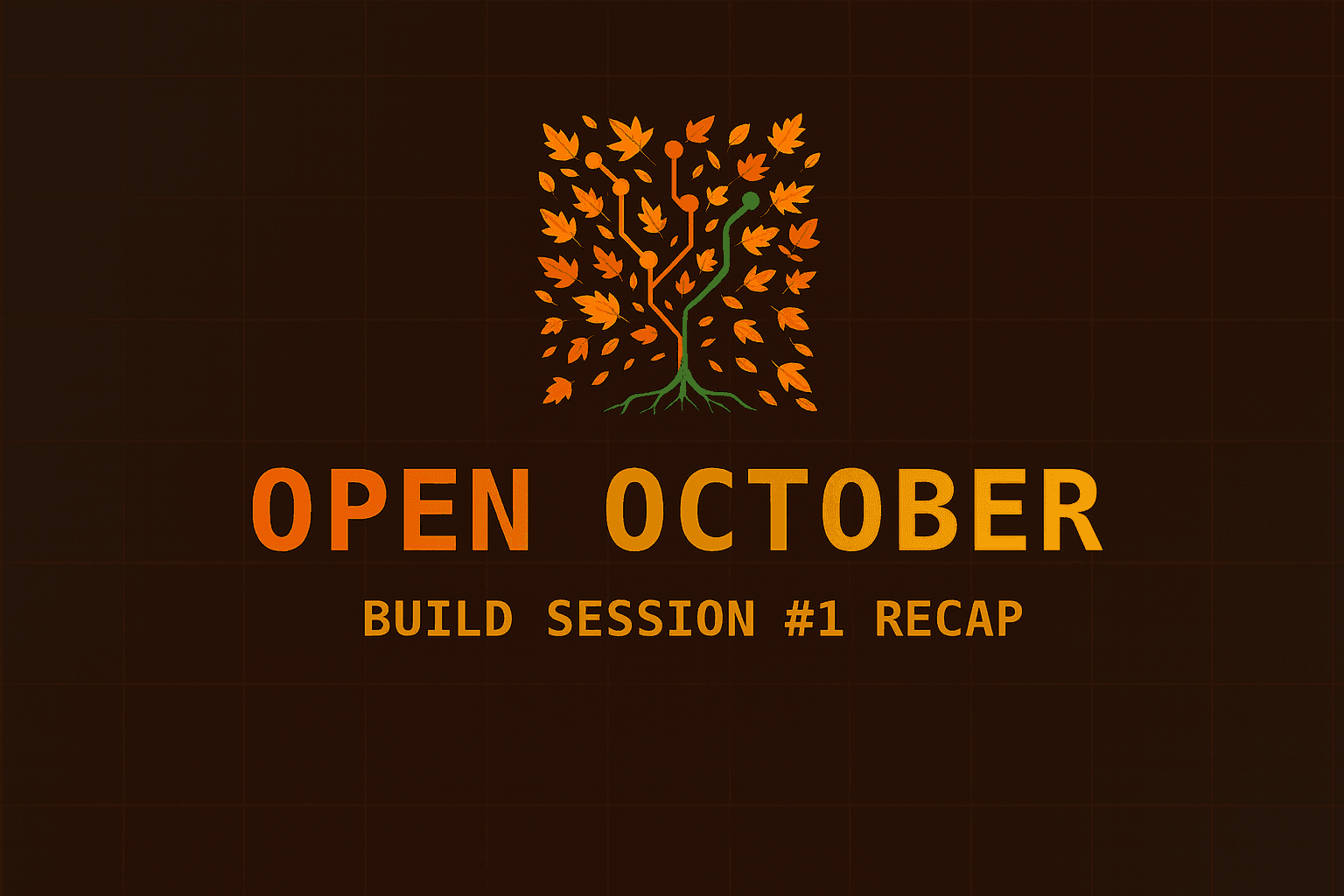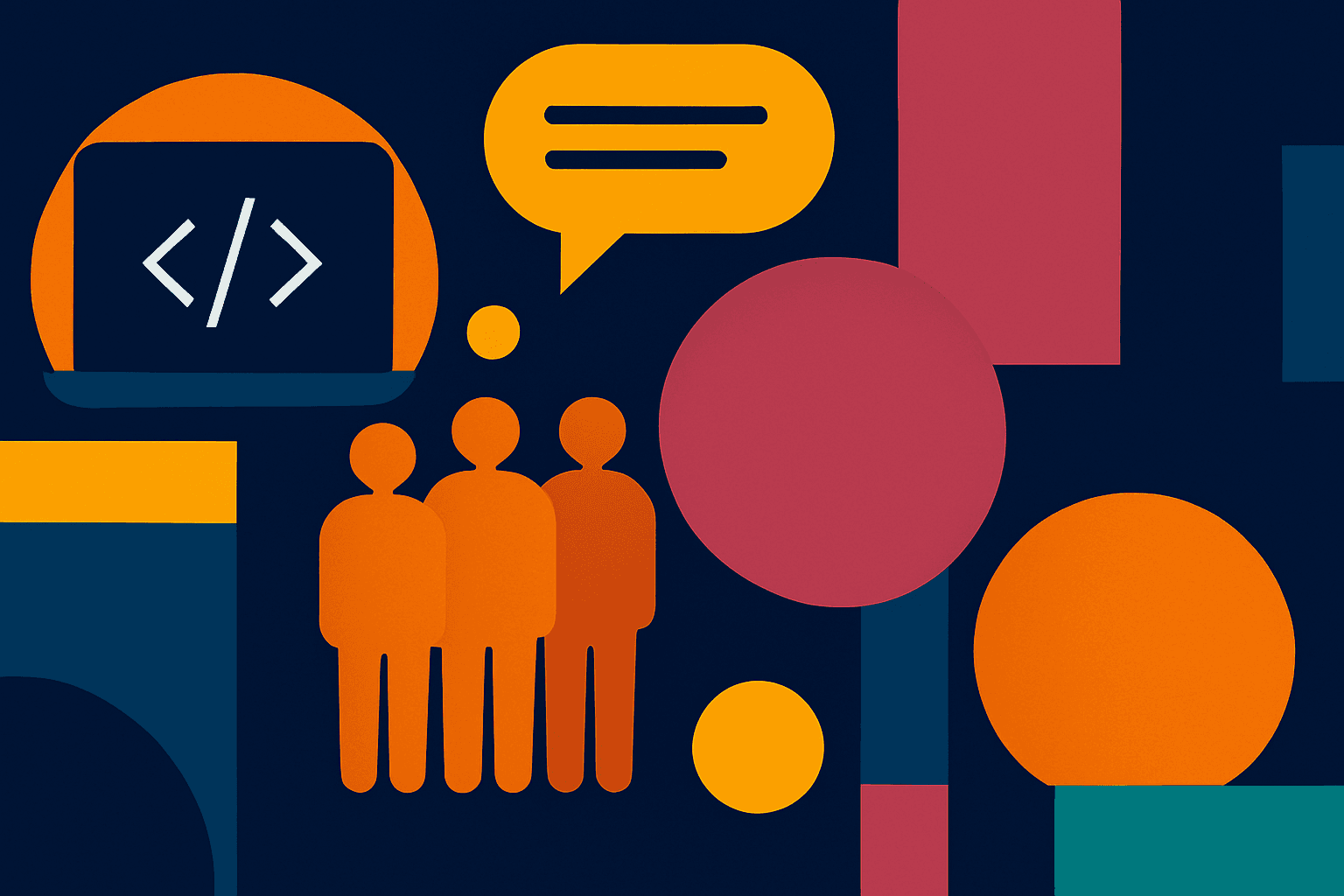
🛠️ Open October Build Session #1 Recap
Our first build session brought together new and returning contributors to share updates and project ideas.
We had the chance to attend a talk by Ron Eglash; Artisanal Futures: Technologies for a Worker-Owned Economy in Detroit at the University of Michigan Detroit Center. The gathering explored how digital fabrication, AI, and open-source tools can uplift artists, artisans, and makers—when developed with community voice and cultural values at the center.
One of the standout collaborations was with the African Bead Museum, where the team co-designed an Afrofuture Greenhouse powered by solar energy and guided by indigenous architectural traditions. From wire sculptures and textiles to vending machines and delivery algorithms, the presentation offered a vision of AI and automation rooted in justice, not just efficiency.
From braiding hair to designing textiles to upcycling scrap materials, the question wasn’t “how can tech replace this?”—but “how can it amplify what people already do well?”
They introduced a “human–machine collaboration spectrum,” helping artisans articulate what parts of their process should remain fully human, where collaboration is welcome, and what tasks could be offloaded to machines (like scaling a pattern to body shape or cutting fabric with laser precision).
They’ve developed solar-powered AI servers, projector-based fabrication tools, and worker-owned software platforms—ensuring that both economic and creative power stays local.
A powerful insight came from their use of AI to identify local sources of materials—not just what’s in a store, but what’s already in the waste stream. Artists were using discarded denim, steel hangers, and surplus leather to create high-end bags and sculptures. AI helped map where these items were located, building a supply chain from reuse instead of extraction.
This approach made clear that training AI on local knowledge systems can unlock real-world access and opportunity—something we can replicate in Detroit for materials, studio space, equipment, and more.
By using cultural heritage as a foundation for STEM and AI education, they were able to engage K–12 students, adults, and elders alike—making computation feel familiar rather than foreign.
As we grow Art Night and develop tools under the Barefoot Dev umbrella, this presentation served as a clear signal: the most powerful technologies are those that emerge from community, not those that are imposed on it.
This means:
Training AI with our stories, our patterns, our materials
Building infrastructure that's solar-powered, peer-owned, and designed to support creative freedom
Teaching AI as a form of cultural stewardship, not creative replacement
Creating a digital commons where value circulates locally—whether through Detroit Points, creative barter, or community co-ops
We’re excited to explore:
A Detroit Material Map: an open, AI-supported tool to find and share scraps, tools, and equipment
A Creative AI Workshop Series: for artists to experiment, document, and co-create tools that serve their vision
Solar-powered server nodes to host locally-owned AI tools for design, fabrication, and storytelling
Cross-cultural collaboration with Boutu AI and other groups using tech to uplift artisanal heritage
Let’s keep building systems that reflect who we are—and that grow stronger the more we connect.
Get notified when I publish new posts about building meaningful tech for real communities.

Our first build session brought together new and returning contributors to share updates and project ideas.

OpenOctober kickoff recap: creatives + technologists aligning to build open, local-first tools for Detroit. Submit your project by Oct 7.

At this month’s Vibe Coding meetup, we explored how AI tools like Cursor can speed up projects—or derail them without clear direction. I shared the Renaissance City LaunchPad, a cultural shift and support ecosystem empowering community organizers to build, own, and sustain their own technology.